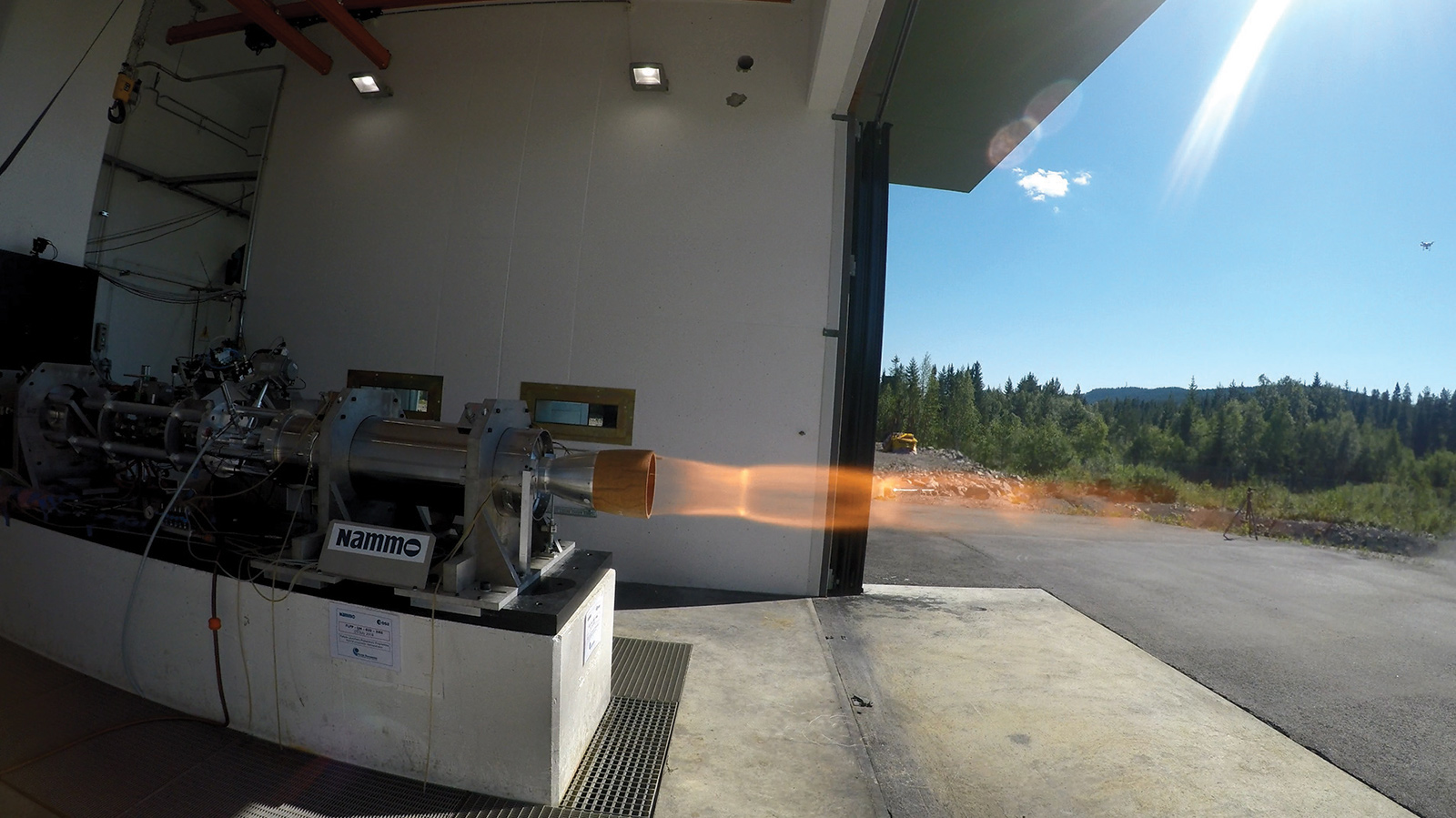Stay Up to Date
Submit your email address to receive the latest industry and Aerospace America news.
The Hybrid Rockets Technical Committee studies techniques applied to the design and testing of rocket motors using hybrid rocket systems.
The year was filled with successful hybrid motor test campaigns ranging from the lab bench to the mesosphere. At the NASA-funded Jet Propulsion Lab in California, a polymethyl methacrylate/gaseous oxygen motor that provides approximately 800 meters per second of delta V, or net change in mission velocity, along with attitude control for a 12-unit cubesat was under development. Potential applications for this motor include a Mars orbit insertion with Phobos and Deimos flybys. Over 30 tests were completed by September and preparations for vacuum testing of a flight-like design were underway during the second half of the year. In addition, JPL and Marshall Space Flight Center in Alabama continued to lead technology development for a Mars Ascent Vehicle intended to deliver samples from the surface of Mars into orbit. To this end, full scale motor testing of a wax-based fuel with MON-3, a mixed oxide of nitrogen, was carried out in February by Space Propulsion Group Inc. of California and Montana, and Whittinghill Aerospace LLC of California. High performance, stable burns with durations up to 90 seconds were achieved. Moreover, liquid injection thrust vector control testing was performed with direct measurements of side thrust.
Researchers at Purdue University demonstrated the hypergolic ignition and multiple relights of a paraffin-based hybrid motor with sodium amide added to the head end of the grain in a study that began in 2017 and continued through June. The storability properties of the chosen liquid oxidizer, MON-3, combined with the robustness of reliable ignition in the absence of an external energy source, have brought this propellant combination into consideration for future Mars missions. The project is being conducted in partnership with JPL.
In Taiwan, TiSPACE performed a series of tests in August to investigate the problem of nozzle throat erosion for hybrid rockets with long burn times. Corresponding tests employed a short section of nylon insert near the aft-end section in the solid grain of a single-port nitrous oxide/styrene butadiene rubber, laboratory-size hybrid rocket motor. The total burn times for these tests were 60 seconds with an average oxidizer to fuel ratio of around 4.6. Results indicated an approximately 60 percent reduction in throat erosion rates when incorporating the nylon insert. Meanwhile, the Advanced Rocket Research Center at National Chiao Tung University in Taiwan leveraged the safety and responsive throttling of hybrid motors with their Quad Hybrid Rocket Engine Levitating Platform. This platform is composed of four fixed, canted nitrous oxide/hydroxyl-terminated polybutadiene hybrid motors mounted to a common airframe. It is controlled by a proportional–integral–derivative algorithm using simple and cheap ball valves to adjust the oxidizer flowrates to each motor. Characterization tests this year showed that this unassuming control scheme is capable of quickly adjusting motor thrust levels with an uncertainty of less than 5 percent.
In Norway, the Nordic Ammunition Co., Nammo, in July completed a static test firing campaign of a hybrid motor that was then used to launch the Nucleus sounding rocket to an altitude of 107 kilometers in September. The 30 kilonewtons of sea-level thrust produced by this motor has set the record for a European-built hybrid motor. More powerful versions of the motor are being planned for small satellite deployment applications. Development is proceeding in partnership with the European Space Agency as part of the Future Launchers Preparatory Program.
Virgin Galactic this year completed three powered test flights of its new SpaceShipTwo vehicle, VSS Unity. The first test, in April, represented the first time that Unity had fired its engines in flight and demonstrated the safe use of an improved “feathering” re-entry system. This test was especially significant as it constituted the first powered flight of a Virgin Galactic spacecraft since a catastrophic accident destroyed the VSS Enterprise in 2014, killing co-pilot Michael Alsbury and injuring pilot Peter Siebold. A follow-up flight in May reached an apogee of 43 km and a maximum speed of Mach 1.9 while a third flight in July extended the performance of SpaceShipTwo to an altitude of 52 km and a Mach number of 2.47.
Contributors: Adrien J. Boiron, Yen-Sen Chen, Ashley C. Karp, Timothée Pourpoint and Jong-Shinn Wu
Photo: A static test of a record-setting 30 kilonewton hybrid motor at Nammo, the Nordic Ammunition Co., in July. More powerful versions of this motor are being planned to deploy small satellites. Credit: Nammo AS
Stay Up to Date
Submit your email address to receive the latest industry and Aerospace America news.




